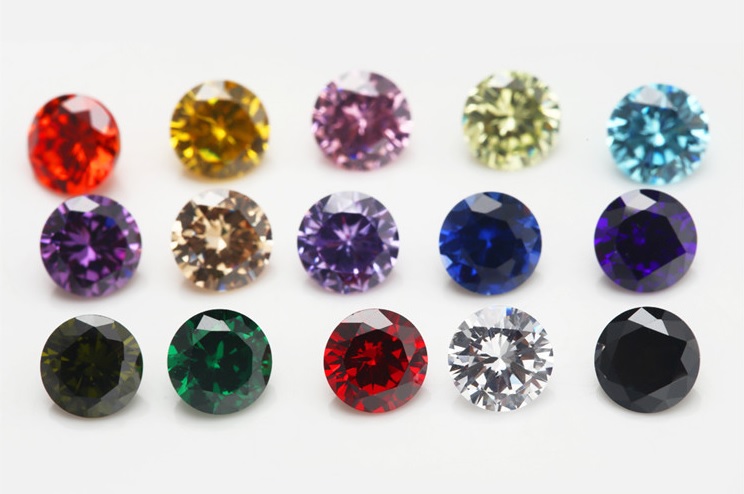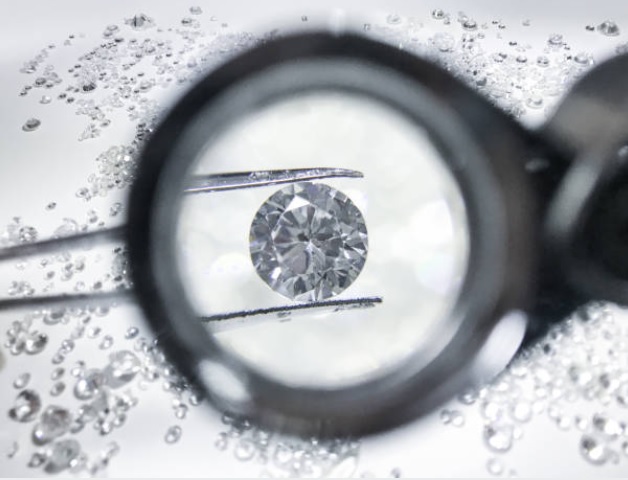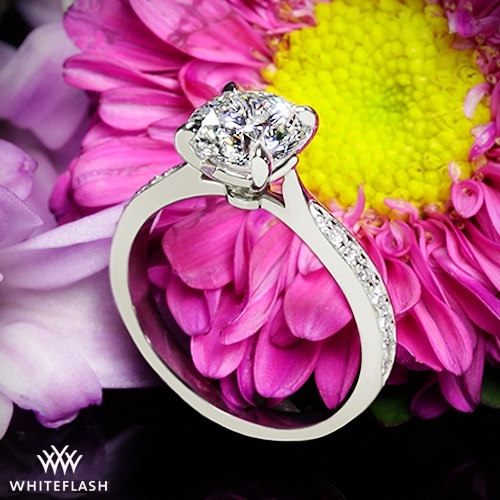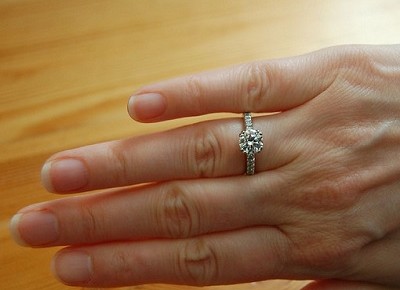Cubic Zirconia vs Diamond – What Are the Differences?

Cubic zirconia (CZ) is one of the most popular diamond alternatives in the market and chances are, you probably come across them if you’ve shopped around for jewelry. But what is cubic zirconia and how is it different from a real diamond?
In this write up, you will find out what CZ is and the key differences between CZ and diamond. You will also be able to view side-by-side comparisons of CZ against diamonds to help you decide whether CZ is the right choice for you.
Let’s jump right in…
Here is a list of topics we will be covering:
- What is Cubic Zirconia And What is It Made of?
- What is the Difference Between Cubic Zirconia and Diamond?
- Cubic Zirconia vs Diamond Side by Side Comparison
- Value And Cost Between These 2 Types of Gemstones
- How to Check If a Diamond is Real or a CZ Stone?
- Frequently Asked Questions About CZ Gemstones
- How to Avoid Getting Scammed in Buying a Fake Diamond?
- Cubic Zirconia vs. Diamond – Which to Choose For a Ring?
What is Cubic Zirconia And What is It Made of?
Cubic zirconia is a synthetic material that is primarily made of zirconium dioxide (ZrO2) and can be mass-produced at very low prices. Due to its close visual resemblance to real diamonds and extremely low cost, CZ is the most popular diamond simulant in the market.
It is important to highlight that cubic zirconia mimics a diamond and is sometimes referred to as a fake, imitation or faux diamond. Also, it is frequently misrepresented as a real diamond on unregulated platforms like eBay or Craigslist and poses a problem to unsuspecting consumers.
What is the Difference Between Cubic Zirconia and Diamond?
| Cubic Zirconia | Natural Diamond | |
|---|---|---|
| Hardness | 8.5 | 10.0 |
| Density | 5.5 – 5.9 | 3.5 – 3.53 |
| Dispersion | 0.058 – 0.066 | 0.044 |
| Refractive Index | 2.088 – 2.176 | 2.4184 |
Material properties of diamond vs cubic zirconia.
Hardness – Diamonds are the hardest substance on Earth and they are ranked as a 10 on the Mohs hardness scale. CZ has a hardness of 8.5 on the Mohs scale but don’t let this number fool you into thinking that CZ is almost as hard as diamond.
In fact, diamonds are many times harder than CZ because the Mohs scale behaves like an exponential scale.
Due to their lower hardness, cubic zirconia is prone to scratching. If you are careless with your cz jewelry or accidentally run it across something rough, the stone can quickly lose its luster and become worn out.
Lower quality CZ can also turn cloudy over time because of its less stable chemical bonds and its tendency to absorb oils.
Clarity/Inclusions – Unlike diamonds which are formed in nature, cubic zirconia simulants are created in the lab and they are always flawless. In nature, a flawless diamond is extremely rare due to the violent formation process they undergo.
Fluorescence – Cubic zirconia reacts to short wave UV (254nm) and usually glows in a yellowish color hue. On the other hand, about 30% of natural diamonds fluoresce in a blue hue when exposed to long wave UV (365nm). The differences in their fluorescence characteristics are attributed to the chemical compositions they have.

Color – Fancy colored diamonds can come in a whole spectrum of colors and hues. Some colors like blue and red are extremely rare in nature and they command very sky-high prices. Likewise, cubic zirconia stones are also available in various colors ranging from pale yellow to brilliant reds.
The main difference when it comes to color is that CZ stones tend to take on more saturated colors and deeper hues.
Cubic Zirconia vs Diamond Side by Side Comparison
In my opinion. cubic zirconia is the best diamond simulants because it looks very similar to a diamond. They are completely colorless and are often polished into similar shapes such as the round cut, princess cut or oval cut.
In the face up view, a cubic zirconia engagement ring also offers good brilliance and fire compared to a diamond engagement ring. Check out the video below where I compare a cubic zirconia ring vs a diamond ring in various lighting environments.
Cubic Zirconia vs Diamond – Value And Cost
The cost of cubic zirconia simulants is only a tiny fraction of a real diamond because of their ability for large-scale manufacturing at cheap prices. To give you some context, the cost of a 1 carat, colorless CZ gemstone that is mass-produced in China would be less than $1.
In contrast, a D color/Internally flawless diamond will retail for around $10,000.
If we were to compare larger stones in the 2 carat range, the cost of a loose D/IF diamond would be roughly $40,000 and this is astronomical compared to the cost of a 2 carat loose CZ which would cost less than $3.
In terms of value, cubic zirconia is pretty much worthless and it carries no market value in the secondary market. If you were to buy a cubic zirconia engagement ring with the intent of selling it in the future as an investment, you will be sorely disappointed.
In fact, this applies to diamond rings as well. Diamonds have poor resale value but you will still be able to recoup some of their market value (~20-40% of the retail price) on the secondary market. This is comparatively better than a cubic zirconia gemstone.
Of course, since cubic zirconia is cheap, you can always buy a new stone when the one you have gets damaged or scratched.
How to Check If a Diamond is Real or a CZ Stone?

It can be tricky because a CZ can look identical to a diamond in many aspects.
The best way for a layperson to tell if a diamond is real is to bring it to a jeweler for identification. There are a number of ways to do it yourself at home but I do advise some caution as results can depend on experience and having some basic gemological knowledge.
Diamonds are the hardest substance on earth and when they can achieve a high degree of luster when polished. If you have a 10X loupe, you can examine the facets of the gemstone and see if the edges/surfaces are crisp and clean.
Cubic zirconia stones are much softer and tend to abrade or get scratched when worn over time. If the edges or the facet surfaces are worn out, it is a telltale sign that the gemstone is not likely to be a diamond. However, this method is not foolproof because a “brand-new” CZ can also look as pristine as a polished diamond.
Most diamonds that are purchased with a reliable grading report from GIA or AGS would also have an inscription number on the girdle. On the other hand, mass-produced CZs are not inscribed. If you have a 10X loupe, you can try locating the presence of an inscription along the girdle of the gemstone.
In my opinion, the most accurate home-based method to identify a real diamond from a fake stone is to use a diamond tester which you can purchase from Amazon or eBay. These testers work on the detection and principle of heat transfer because diamonds are extremely efficient in conducting heat compared to CZs.
Diamond tester in action for both CZ and diamond engagement ring.
Frequently Asked Questions About CZ Gemstones
Is cubic zirconia good?
In my opinion, cubic zirconia is the best simulant for a diamond alternative and for people shopping on a tiny budget. Granted, cubic zirconia may not be as durable as a diamond and they can get worn out with daily wear. However, they are very cheap and you can easily replace them at a low cost.
Can cubic zirconia turn your finger green?
No. If you are seeing discoloration of your skin after wearing a CZ ring, it is likely that the color comes from the tarnish of the metal setting. Due to their cost, most CZ stones are mounted on cheap settings instead of white gold or platinum settings. When the outer coating of a cheap metal setting wears off, the ring gets tarnish and turns your finger green.
Can cubic zirconia pass a diamond tester?
No. Most diamond testers utilize a heat probe to test the unknown gemstone for its heat conductivity. Cubic zirconia is a bad conductor of heat while a diamond is a superb conductor of heat and this difference is easily picked up by a tester.
Can cubic zirconia cut glass?
For some reason, there is an unorthodox method of testing whether a gemstone is a diamond by using it to cut glass. For the record, both cubic zirconia and diamond CAN cut glass because they are harder than glass. This is not a definitive way to determine whether a diamond is real or fake.
However, some high-quality cubic zirconia can also scratch glass, so this test is actually not a definitive way to determine whether a diamond is real or not.
Does cubic zirconia rust?
Cubic zirconia does not rust and people often mistake a tarnished piece of jewelry as being rusty. Depending on the type of metal used in the setting, it can look rusty or change color through constant exposure to the environment.
Does cubic zirconia get cloudy?
Yes. There are a couple of reasons that a CZ stone can look cloudy. The most common reason is that it is dirty and this can easily be fixed by cleaning the jewelry with a toothbrush and soapy water.
CZ jewelry can also look cloudy if it has accumulated a lot of surface scratches due to wear and tear. When this happens, you can always replace the center stone with a new gemstone or buy a completely new piece of jewelry since they cost so little.
Is cubic zirconia the same as zircon?
No. They are completely different materials and zircon is a gemstone that is much softer and has the chemical name, zirconium silicate. Sometimes, you may also hear the term cubic zirconium being used by sellers. Technically speaking, cubic zirconium does not exist and some jewelers wrongly use it to refer to cubic zirconia.
How to Avoid Getting Scammed in Buying a Fake Diamond?

In the jewelry business, you need to remember the adage “If it is too good to be true, it probably is”. One of the biggest red flags that something isn’t right is that the price is too low or too cheap. Most of the time, there’s no reason for a seller to be giving you a “great deal” when he/she could be selling a piece of jewelry for more money.
When the price of the jewelry piece is too low, you should ask and check for any accompanying certificates to know what you are paying for. I can tell you from experience that many people fall prey to scammers because of greed and thinking that they can outsmart the system.
The best way to protect yourself and to buy a high-quality diamond ring is to buy from a reliable vendor. When buying diamonds, you also need to ensure that they come with a reliable grading certificate from GIA or AGS.
At the end of the day, practicing some common sense and doing your research prior to making a purchase will help you make better decisions and avoid scams.
Cubic Zirconia vs. Diamond – Which to Choose For a Ring?
Stunning pave diamond engagement ring from White Flash.
I hope this comparison article has offered useful insights into both types of gemstones. Diamond and cubic zirconia share a few common characteristics but they actually differ greatly in terms of durability and prices.
If you are looking for jewelry that is long-lasting and has better light performance, diamonds are the clear winner but they do cost more. On the other hand, if you are looking for inexpensive jewelry to suit changing tastes, CZ is the better option because of its cheaper price point.
Now I want to hear from you. Would you consider cubic zirconia as a diamond alternative for an engagement ring or would you stick to buying the real thing? Leave a comment below and let me know your thoughts.
Related Articles
Leave A Comment















8 Comments
If a gemstone has no inclusions, can it be an indication that it is a fake diamond? What are the most accurate ways to check for a real diamond and fake cz diamond?
This is actually an attribute you can look out for to check if a diamond is real. Most diamonds have some form of inclusions in them but you need to bear in mind that a flawless gemstone doesn’t mean that it may not be a diamond because flawless diamonds do exist in nature. You can use these characteristics in conjunction with other tests stated above to help to determine whether a diamond is real by the method of elimination.
At this point, I want to be clear that the absence or presence of fluorescence should not be used as with the same context above.
The more objective and scientific method used to correctly identify a cz stone is to measure its optical and physical properties. For example, if you have an unknown gemstone, you can measure the refractive index using a refractometer or the specific gravity using a liquid to determine the type of gemstone it is.
For non-trade people, the easiest way to identify a CZ is to get a diamond tester. It works on both mounted and loose stones.
Why is there a range of density for diamonds and CZ values? Isn’t this supposed to be a fixed value?
Density depends on how closely packed the atoms of a substance are. With CZ, there are different compositions depending on how a manufacturer wants to add to their secret recipe (starter powder or additives). For the case of diamonds, there is a small variance in the density for the same reason due to impurities like inclusions.
What are cz diamonds that are found in listings on eBay? Are they diamonds or not? Is it referring to a mixture of CZ and diamond in one piece of jewelry?
The term CZ diamond is very misleading and is commonly used by unethical sellers to obfuscate consumers. These sellers are labelling cubic zirconium stones as diamonds in an attempt to market them as being the same. Bear this in mind when buying at places like eBay where jewelry quality is generally low or outright bad.
Besides CZ, what are other stones that look like diamonds? Have you heard of moissanite and what do you think of it compared to cz and diamond? Can you recommend some places to buy cubic zirconia rings that look real? Most of the CZ jewelry I had encountered in departmental stores look cheaply made and unbalanced.
In terms of appearance, no other stone apart from CZ will offer a close resemblance to diamonds. Moissanite is often touted as a “better” alternative but it doesn’t look like a diamond at all because of its refractive properties. Instead, moissanite appears oily and is often cut badly with poor contrast patterning. I’ve written an article and performed a comparison of diamond vs moissanite here and you might want to check it out to get more info.
https://beyond4cs.com/faq/moissanite-vs-diamond/
I can’t recommend any good places to buy CZ jewelry and there’s a reason for it. CZ rings are often priced very cheaply because it doesn’t make economic sense for them to put in extra effort for creating the ring settings by hand. Most of these stones and jewelry are mass produced by machines in volume with little priority placed on quality.
Compared to moissanite, cubic zirconia is cheap and easily replaceable if it gets damaged. In my opinion, they are a better substitute for diamonds.